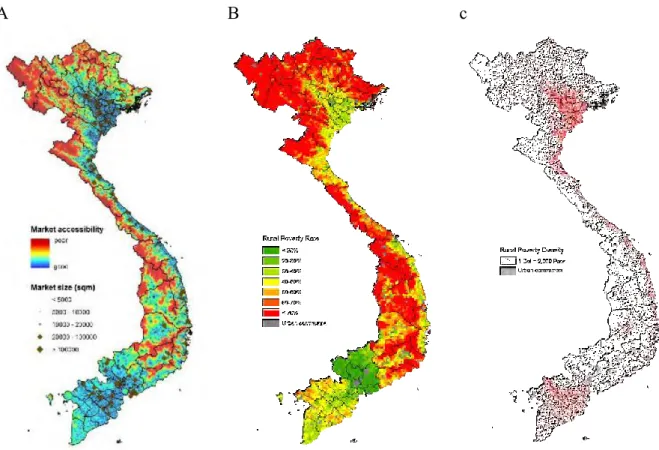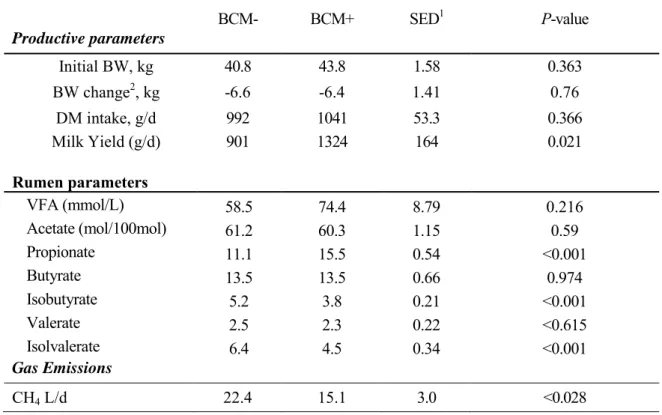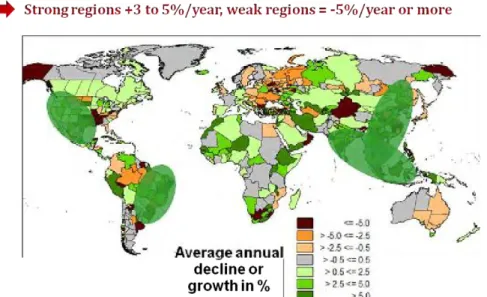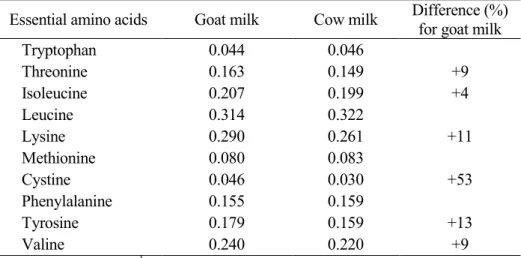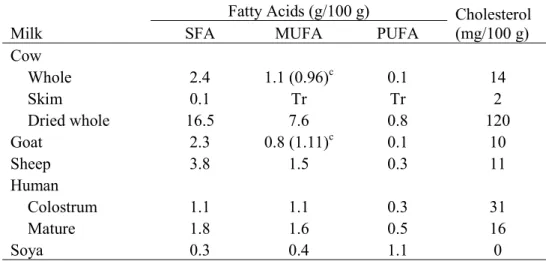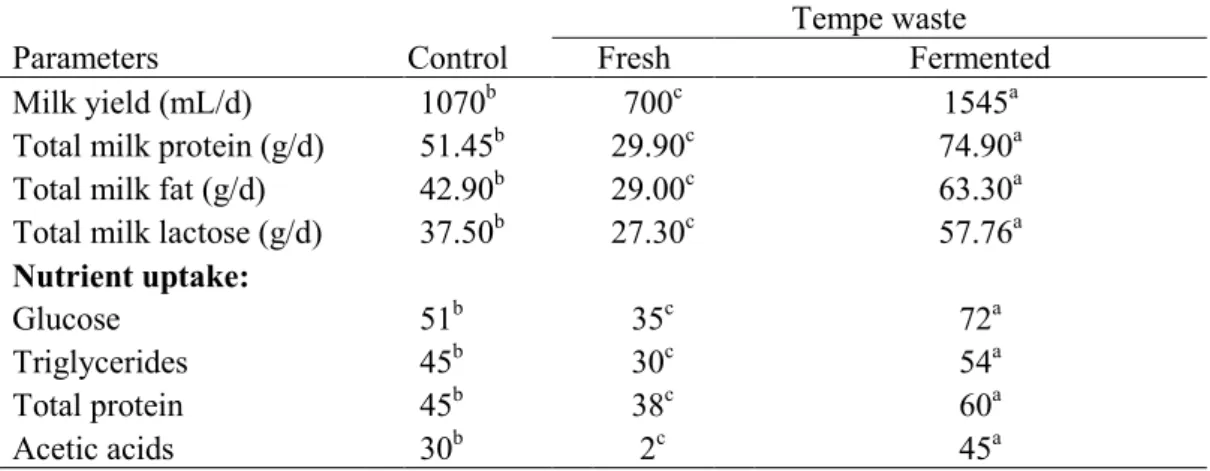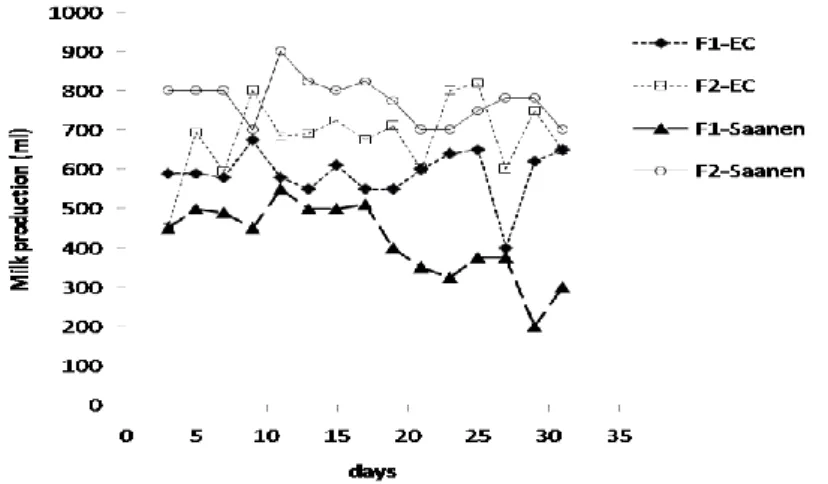FAO joined Universiti Putra Malaysia (UPM), Department of Veterinary Sciences, Malaysia and the International Dairy Federation (IDF) in organizing the 1st Asian Dairy Goat Conference in Kuala Lumpur, Malaysia from 9 to 12 April 2012. The conference provided a platform to share information and technical experiences and to network for the promotion of dairy goat farming.
Dairy Goats in Asia: Multifunctional Relevance and Contribution to Food and Nutrition Security
Introduction
Goat genetic resources: Diversity and distribution
Dairy goat breeds
In Malaysia and Trinidad for example, crossbreeding with the Anglo-Nubian to F2-F3 generations gave consistently improved productivity.
Multifunctionality: Products and services
Contribution to improve food and nutritional security
Goat milk provides higher levels of 6 of the 10 essential amino acids: threonine, isoleucine, lysine, cystine, tyrosine and valine compared to cow's milk (Posati and Orr, 1976). In China, for example, less than 5% of goat's milk is marketed (Luo, 2009), the remainder of which is presumably used for domestic consumption.
Efficiency of milk production
Goat's milk exceeds cow's milk in polyunsaturated, polyunsaturated, and medium-chain triglycerides, all of which are known to be beneficial to human health, especially cardiovascular conditions (Haenlein, 2004). The various contributions of critical nutrients are particularly important for resource-poor farming households living in the shadow of continued existence and vulnerability.
Goats or cows for milk production?
Direct investment in family goat herds in rural areas is therefore likely to have a much greater impact on the quality of life of the rural poor. A two-pronged strategy that could be implemented is the intensification of dairy goat programs for the rural and peri-urban areas and commercial dairy cow milk for the urban areas.
Development strategies
Under these circumstances, it is more realistic, nutritionally appropriate and economical to encourage milk production from goats in rural and suburban areas in parallel with urban milk production from cows.
Linking Smallholders to Markets – Opportunities and Challenges
Asia’s food markets
Poverty incidence, poverty density and market access
Barriers to market participation
Overcoming barriers to market participation
Governments can play a critical role in improving these pro-poor supply networks by supporting grassroots producer cooperatives and extension services and maintaining a general environment favorable to small enterprise development. On the financial side, microcredit schemes can accelerate technology adoption and modernization of small businesses, improve productivity and product quality/reliability and ultimately lead to established brands and reputations that provide higher long-term value addition at lower transaction costs.
Conclusions
Governments can also bolster the efforts of farming groups already adopting economically viable production practices while recruiting farmers interested in following these examples. Such initiatives can be modeled on early strategies of Western agri-food producer cooperatives, which are now the main guarantors of product quality and agricultural market access in OECD countries.
Challenges Facing Dairy Goat Farmers in Malaysia
Issues and Challenges Facing Dairy Goat Famers in Malaysia
Data centers should be established and farmers should be encouraged to keep individual farm records. Dual purpose goats should be a choice breed that will contribute greatly to the development of the Malaysian dairy goat industry.
Dairy Goat Farming in Australia: Current Challenges and Future Developments
The dairy goat industry in Australia
Health issues in dairy goat production
In the short term, one solution could be for the Australian dairy goat industry to obtain a minor use permit (MUP) for products registered in sheep. In the long term, taking into account the rapid expansion of the goat industry as a whole (goat, fiber and dairy), it is necessary for the industry to move beyond the realm of a minor species and develop its own research, development and extension program to address management of gastrointestinal parasites.
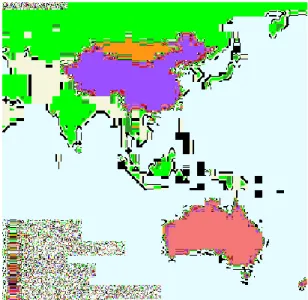
Current and future developments
The role of anthelmintics in the control of gastrointestinal parasites is increasingly threatened by resistance in the target parasite species. Resistance of worms in sheep and goats to most anthelmintics is now quite common in Australia (Besier and Love, 2002) and should be considered in the diagnosis and management of gastrointestinal parasitism.
Improving Dairy Goat Productivity with Concomitant Mitigation of Methane
Materials and methods
Results
The experimental treatment did not change the total VFA concentration in the seed, although the VFA profile was affected by the addition of the BCM formulation, increasing the proportion of propionate and decreasing the proportion of branched-chain VFA (namely, isobutyrate and isovalerate).
Discussion
However, this was not the case, and the thinning effect in response to increased milk yield (ie, reduction in fat and protein concentration) was also not significant. The inter-animal variation observed in this study for milk variables was high, which contributed to the lack of significant changes.
The Possibility of Controlling Flow of Metabolic H into Various Pathways in Rumen Fermentation to Improve Dairy Goat Productivity
Currently, we have investigated mechanisms of rumen methane production upon administration of BCM to Shiba goats. These findings provide new insight into rumen methanogenesis and will aid in the development of strategies to reduce methane production to improve ruminant productivity (Mitsumori et al., 2011).
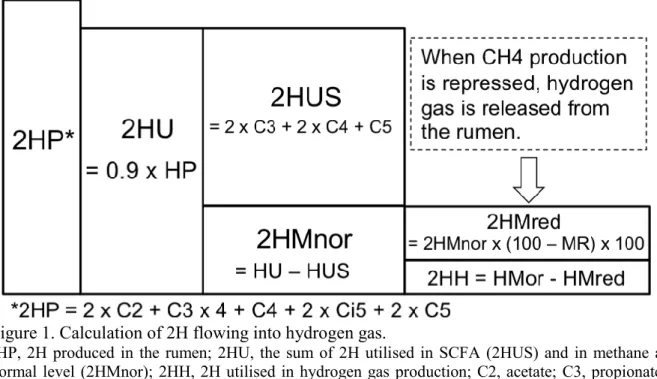
IDF Perspectives on the Global Dairy Situation and Development Perspectives for Non-Cow Milk
Development of milk production
Milk processing and consumption worldwide
Costs of milk production, prices and production outlook
Goat milk production has increased steadily in recent years, but this growth tends to slow down. IFCN Dairy Report 2011, International Dairy Research Center of the Farm Comparison Network at the University of Kiel, Schauenburgerstraße 116, D-24118 Kiel, Germany.
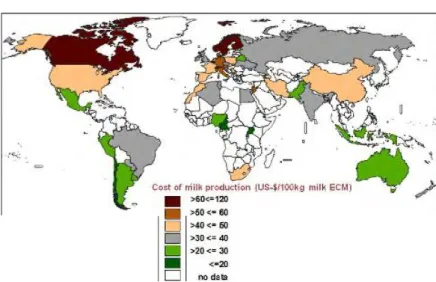
Goat Milk and Human Nutrition
Compositional characteristics of goat milk
Compared with cow's and sheep's milk, goat's milk has its unique differences in several key constituents and physical parameters, such as proteins, lipids, minerals, vitamins, carnitine, glycerol ethers, orotic acid, enzymes, fat globule size, casein polymorphisms. This composition and physical differences of goat milk play an important role in human nutrition (Park and Haenlein, 2007).
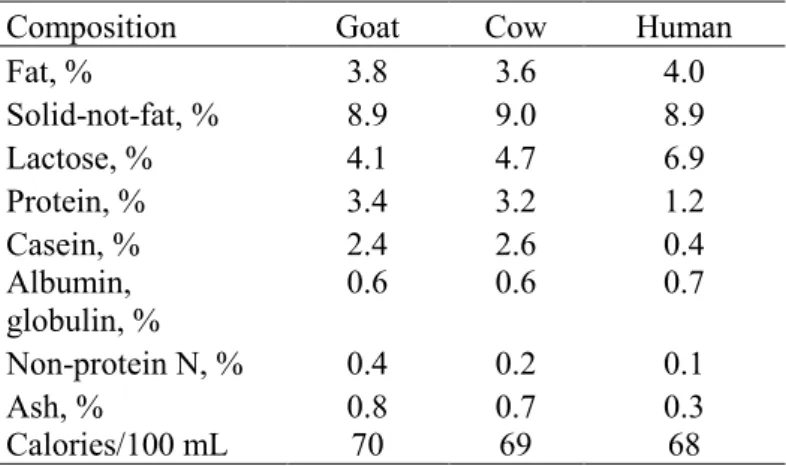
Nutritional and therapeutic values of goat milk
Scientific studies with goat milk in human nutrition
Beneficial effect of goat milk on nutritional utilization of iron and copper in malabsorption syndrome. Comparison of the mineral and cholesterol composition of different commercial goat milk products produced in the USA.
Microbiota of Goat’s Milk and Goat’s Milk Cheese
Microbiota of goat milk
High percentages of polymorphonuclear neutrophils were found in goat milk with low SCC, increasing with lactation stage and age, while levels of lymphocytes and macrophages decreased. Pathogens associated with mastitis in normal goat milk samples include Staphylococcus spp., Bacillus spp., coliforms, Micrococcus spp., Streptococcus spp., Corynebacterium spp.
Microbiota of goat milk cheeses
In Portugal, lactic acid bacteria have been reported as the predominant group for the two main cheeses prepared with sheep's and goat's milk mixtures, namely Picante da Beira Baixa Rabaçal and Amarelo da Beira Baixa, while no microbiological data exist on Cabra Transmontano, which is exclusively produced with goat's milk. Recent studies have shown that lactic acid bacteria, such as lactobacilli, enterococci and pediococci, are present in Argentinian goat's milk and goat's milk cheeses (Medina et al., 2011).
The Welfare of Dairy Goats
Drought conditions
Behaviour of dairy goats
Health in housed and other intensive management systems
Aggression between goats is also common in intensive housing systems, but proper housing system design can help mitigate the impact on individuals (Nordmann et al., 2011). Goat farmers tend to be less likely to use prophylactic medication than cattle or sheep farmers, which makes the animals more susceptible to infectious diseases (Elbers et al., 2010).
Transport
Parasite control was rated by industry stakeholders as one of the most serious welfare concerns for goats and sheep in Australia (Phillips et al., 2009), but there was no difference between the two species. Slowing the spread of worm-resistant sheep and goat nematodes in the UK.
Dairy Goats in Indonesia: Potential, Opportunities and Challenges
Potential
Opportunities
The "waste" is sold to the Salak fruit plantation in the vicinity of the farm. Tempe waste, which is produced as a by-product of cottage industry, has potential to be used in dairy goat rations.
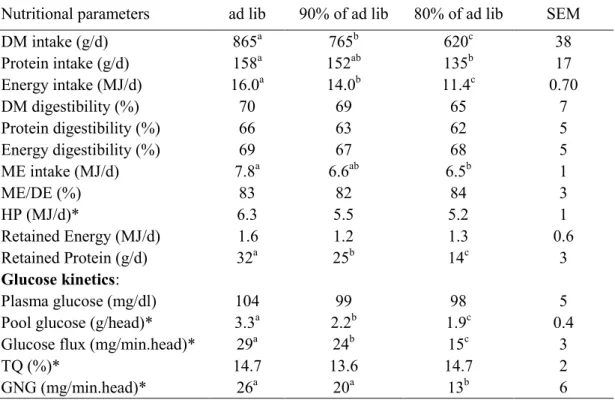
Challenges
Nutrient balance and glucose metabolism of growing, late pregnant and lactating female Etawah crossbred goats. Milk producing potential of Etawah crossbred goats based on milk arterio-venous variation of nutrient content and milk composition.
Dairy Goat in Vietnam: Potential, Opportunities and Challenges
Situation of dairy goat in the whole livestock production of Vietnam
The local breed of dairy goat is the Bach Thao, a dual-purpose goat used for meat and milk. Dairy goat production is also under the extension program of the Ministry of Agriculture and Rural Development (MARD) to help small farmers in the country.

Disease situation
In remote areas, children or the elderly usually take care of free-range goats during the day and take them home in the evening. Goats are included in the animal husbandry system by consuming feed that is not used by other animals.
Product processing and markets
Available local feed sources are also being investigated for use as goat feed, including mulberries (Morus alba), bananas (main stem), cassia hay (cassia stem and leaves), and cassia roots. Three-quarters of Vietnam is mountainous and hilly covered in trees, which is a great source of agricultural by-products that can be used as goat feed.
Opportunity
Future activities
Dairy Goats in Thailand: Potential, Opportunities and Challenges
Distribution of goats in Thailand
The average number of dairy goats per farm is higher in the central part than in the rest of the country. Saanen is the most popular among dairy goats in Thailand due to its high milk yield, found mainly in the central and southern regions.
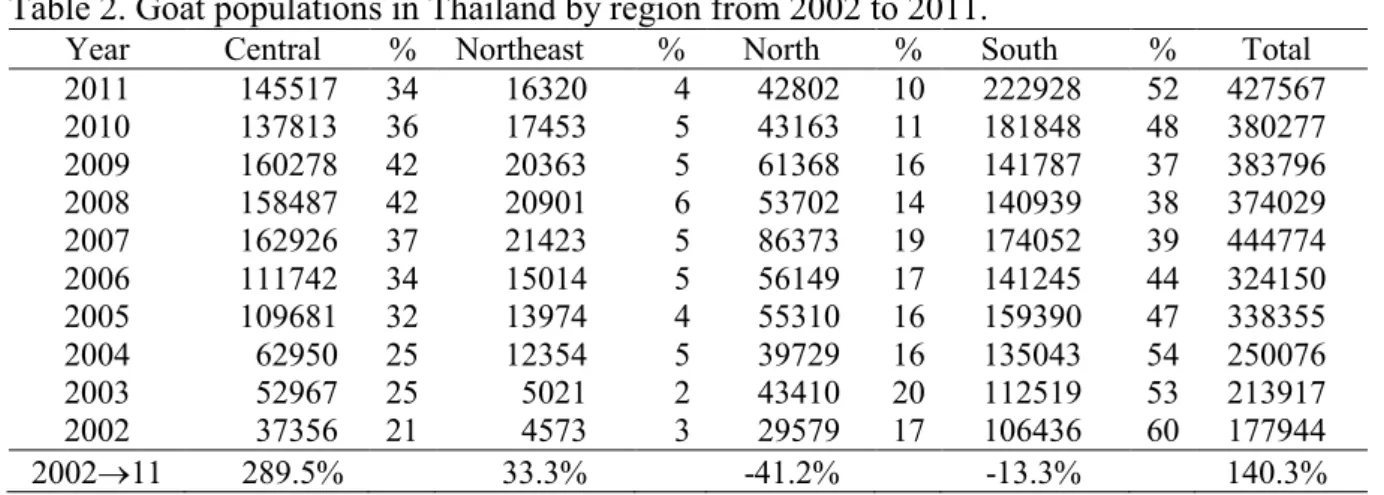
Potential of dairy goat production
Dairy goat production fits well with the rural areas and resource capacity of small farmers from low input production to business model. The milk drinking habits of Thai children will ultimately lead to positive consequences for goat milk production in terms of demand and technological development.
Dairy Goats in Pakistan: Potential, Opportunities and Challenges
Goat population and distribution
Dairy goat population
Production systems
Due to limited grazing areas, pastoralists are currently rearing more small animals in a sedentary and household system. As shown in Table 3, there is a large shift in smallholder production from nomadic to sedentary and household systems.
Goat milk production
However, pasture degradation, drought, and flooding over the past 5-6 years seem to have further altered smallholder production systems. Sedentary and household systems are more common in Punjab and Sindh provinces, while about 59% of sheep and goats are in transhumance system and 30% in nomadic system in Balochistan (Afzal, 2003).
Milk production potential of different dairy goats
Recommendation
Challenges and constraints
Perspectives for Increasing Nutrient Use Efficiency in Dairy Goat Production
Availability and nature of feeds and efficiency of nutrient use
A prerequisite for this is farmers' access to information on the availability of feed resources in the region, their chemical composition and nutritional value. Equally important is the generation of reliable information on the chemical composition and nutritional value of feed sources (FAO, 2011) and the collation of this information in the form of a user-friendly database, e.g.
Novel feeds and strategies for increasing nutrient use efficiency
In this context, the guidelines for establishing national estimates for animal feed developed by FAO (2012a) would help generate information on the availability of animal feed resources in a region or country and lead to the rational use of resources. of animal feed. For the semi-intensive goat production system, application of the ration balancing method would require information on feed intake and nutritional value of feed consumed during the grazing period.
Feed additives and supplements and nutrient use efficiency
Some distillers grains, due to their specific processing conditions, have high rumen bypass protein and are expected to increase milk yield of high yielding goats. Similarly, rumen-protected amino acids, starch and fat can be considered for inclusion in the diets of high-yielding dairy goats.
Performance of animals and efficiency of nutrient use
These observations suggest that for feed-efficient production systems, in addition to the good quality of the feed, a high genetic potential of animals is of the utmost importance.
Animal breeding for increasing nutrient use efficiency
Implementation of a new and simple ration balancing approach at smallholder dairy farm doorsteps in India: impact and opportunities for other developing countries. International Workshop on Feeding Systems and Ration Balancing for Dairy Farms in Tropical Countries, Villavicencio, Colombia, October.
Use of Indigofera zollingeriana as a Forage Protein Source in Dairy Goat Rations
Results and Discussion
Thus, this study showed that the use of Indigofera herbs is very effective in stabilizing milk production before the end of the lactation period, while improving quality and reducing feed costs. Herb yield and quality of two vegetative parts of Indigofera at different times of first regrowth defoliation.
Protein Requirement for the Maintenance and Gain of Growing Goats Fed Leucaena leucocephalade Roughage-Based Diets in Thailand
Protein requirements for maintenance and performance of growing goats Fed Leucaena leucocephalade based on processed feed in Thailand. The results showed that the maintenance and growth protein requirements for growth of Anglo-Nubain crossbred goats fed a diet based on Leucaena raw food with different levels of cassava chips under tropical conditions were 157 and 272 g of protein, respectively. gross / day.
Acknowledgements
Yield and Quality of Forage affected by Molybdenum Fertiliser and Legume Genotypes
The Use of Rain Tree Pods as a Feed Supplement for Dairy Goats
Purine derivatives in the urine were measured as allantoin, uric acid, xanthine and hypoxanthine and microbial-N in the rumen was calculated using comparison of Jetana et al. However, digestibility coefficients of DM and OM were generally lower in goats in the RTPP than those in the CCP group.
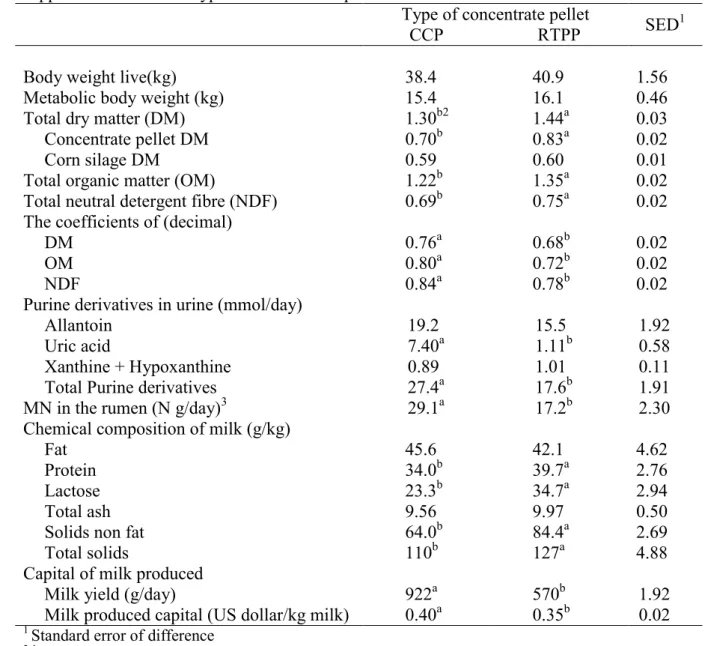
Conclusion
The use of tropical protein-rich leaves to supplement Thai swamp buffalo receiving a basal diet of rice straw and processed leucaena (Leucaena leucocephala). Use of treated leucaena (Leucaena leucocephala) leaves as a supplement to Thai Brahman cattle fed a basal diet of rice straw.
Effect of Jerusalem Artichoke Supplementation on Methanogenic Achaea in Dairy Goats using Real Time PCR Technique
Populations of total protozoa and total bacteria in the rumen fluid counted under an optical microscope are shown in Table 1. The results indicate that addition of 10% inulin did not affect the population of methanogens in the rumen of dairy goats.

Production and Quality of Pasture with Introduced Legumes for Dairy Goats
The uptake of N and Ca when treated with half doses of fertilizer, manure and potential microorganisms (P3-P8) was significantly higher than when using fertilizer alone (P2). Dry matter production, mineral uptake in treatments with half doses of fertilizer, manure and soil potential microorganisms (P3-P8) were higher than in fertilizer use (P2) and control (P1).
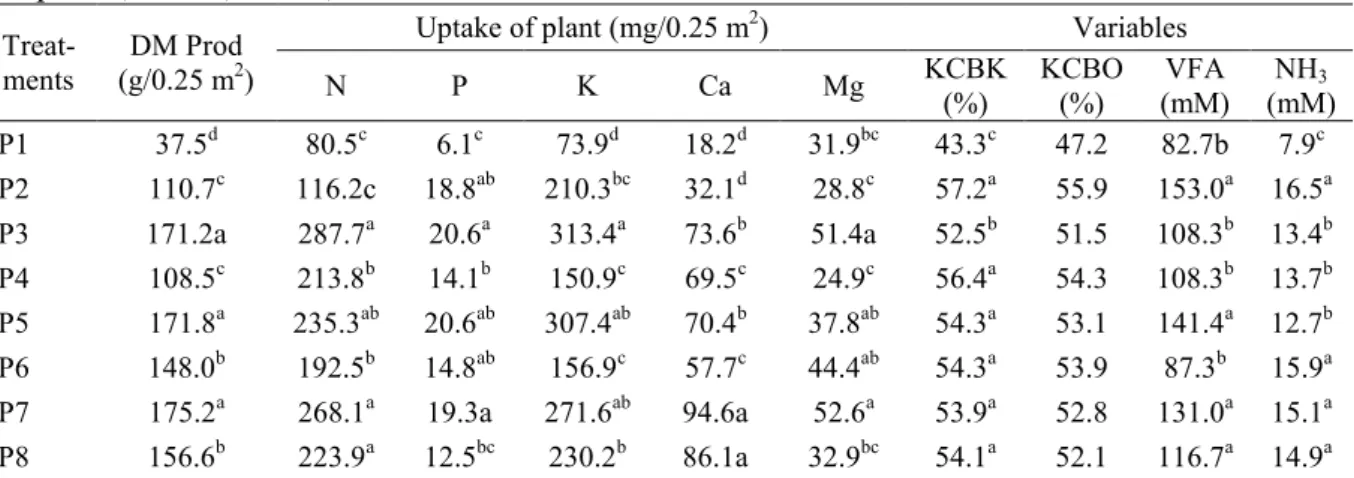
Evaluation of Tree Leaves as a Crude Protein and Energy Supplement to the Low Quality Diets of Dairy Goats
Evaluation of tree leaves as a crude protein and energy supplement for low quality dairy goat diets. Chemical composition, rumen degradability, protein utilization and lactation response to selected tree leaves as a substitute for cottonseed cake in diets for dairy goats.

Assessment of Grewia oppositifolia Leaves as Crude Protein Supplement to Low Quality Diets of Goats
Evaluation of Grewia oppositifolia leaves as a crude protein supplement for low-quality feed of goats. Dry matter (DM) intake, apparent DM and CP digestibility and N retention in response to substitution of cottonseed cake (CSC) with Grewia oppositifolia leaves.

Effect of Intersowing Italian Ryegrass ( Lolium multiflorum ) with Dwarf Napier Grass on Yield and Quality for Biomass Use
Effect of intercropping Italian ryegrass (Lolium multiflorum) with dwarf napier grass on yield and quality for biomass use. Dry matter yield, cellulose and hemicellulose content of Italian ryegrass decreased significantly (P<0.05) with increased plant density of dwarf Napier grass.
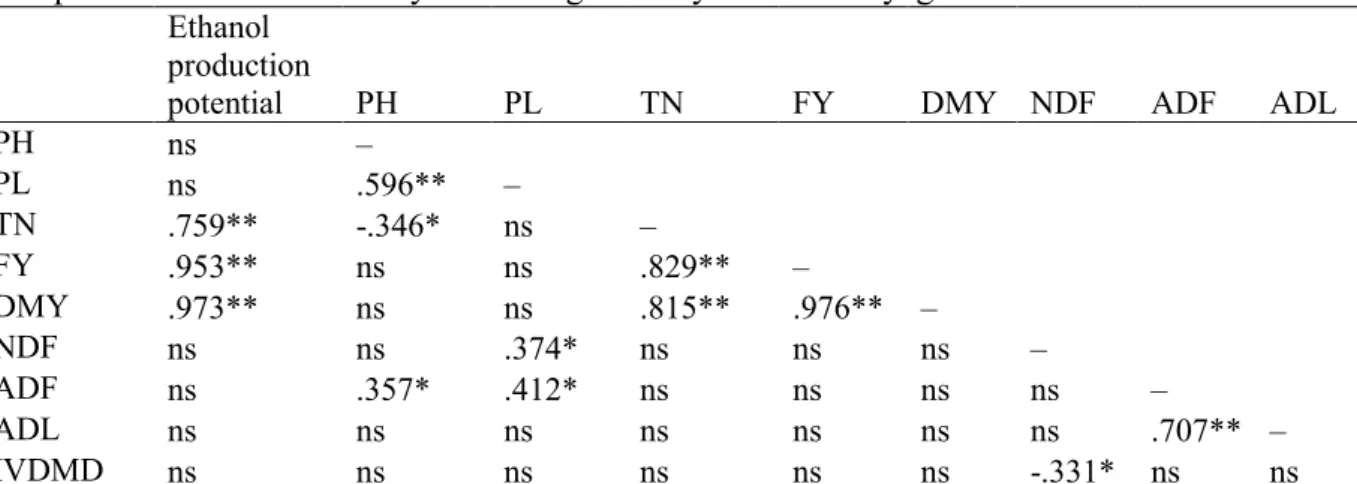
Effect of Feeding Pattern on Rumen Microorganism Population in Saanen Goats
The NDF content (67.04%) of cut-and-carry grass was significantly (P<0.05) higher than that of grazing goats (60.65%) because grazing goats may choose to consume good quality grass with lower NDF than those in the mow-and-carry system. As fiber content has a large effect on methane emissions in ruminants (Graeme et al., 2000), it is possible that grazing goats produce less methane than cut-and-carry goats, indicating lower methanogen counts in grazing goats.
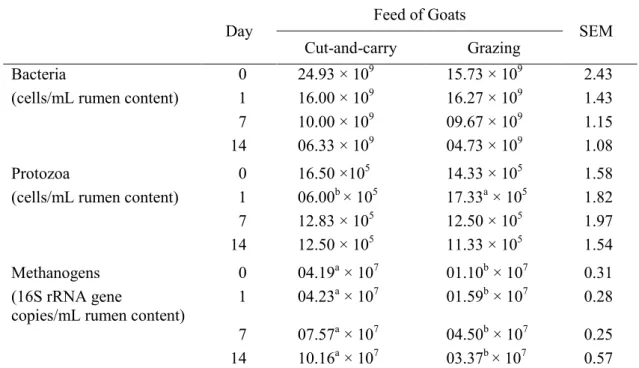
Supplementation of Leucaena and Acacia mangium Willd Foliages on Microbial N Supply, Digestibility and N Balance in Saanen Goats
Supplementation of Leucaena and Acacia mangium Willd foliage on microbial N supply, digestibility and N balance in Saanen goats. The current results indicate that local protein foliage from shrubs and trees can replace imported feeds such as SBM as a protein supplement for dairy goat production.
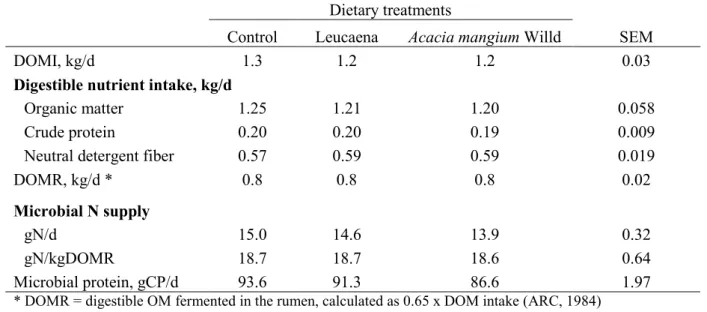
Enhancing Performance of Dairy Goat by Biscuit Feeding as Fibre Source
Based on this study, it was shown that veldgrass plus corn leaf crackers (R2) have the best physical properties. It was concluded that field grass plus corncob can be processed to produce crackers as a fiber source for ruminant feed.
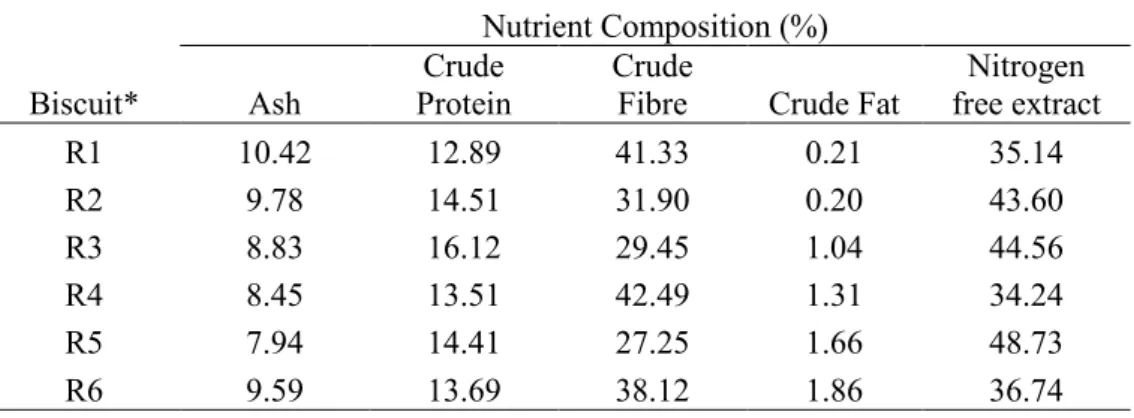
Development of a New Quantitative Competitive PCR Assay for Rumen Butyrate-Producing Bacterium, Butyrivibrio fibrisolvens
As a result of our study, a new quantitative competitive PCR (QCPCR) assay was developed for the quantification and enumeration of Butyrivibrio fibrisolvens in rumen fluid samples. Development of a competitive polymerase chain reaction assay for the rumen bacterium Butyrivibrio fibrisolvens OB156 and its application to the detection of an OB156-derived recombinant.
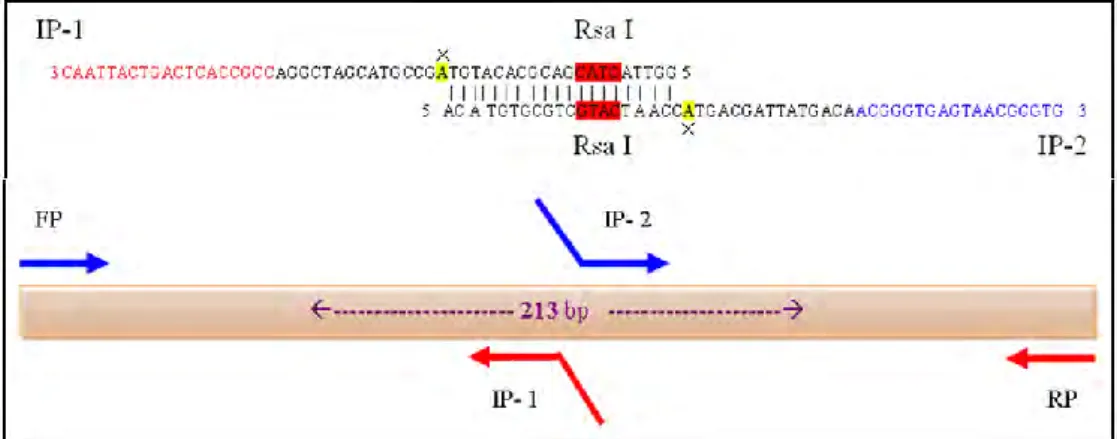
Reproductive, Production and Economic Performances of the Damascus (Shami) Goats in Cyprus
The fat and protein content of the milk was typical of high yielding breeds, ranging from 3.8 to 4.5% for fat and from 4.0 to 4.8% for protein. Therefore, it is clear that Shami is a good candidate among the potential dairy goat breeds considered for strategic planning of the Malaysian goat industry.
Genotypic Characterisation of Ardi Goats in Saudi Arabia
The mean number of detected alleles and He were very good indicators of genetic polymorphism within breeds. Genetic diversity analysis of Gohilwari goat (Capra hircus) of India using microsatellite markers.
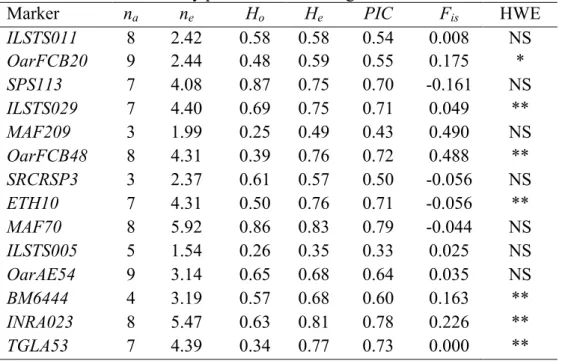
Effect of Estrus Synchronisation with Sponge and CIDR on Pregnancy Rate, Sex and Birth Type of Kids in Iranian Adani (Persian Gulf) Goats
Effect of oestrus synchronization with sponge and CIDR on child pregnancy rate, sex and birth type in Iranian goats from Adani (Persian Gulf). The effect of sponge and CIDR on gender and birth type of children (in percentages).

Estimation of Genetic Parameters for Growth Traits of Iranian Adani (Persian Gulf) Goats
Materials and Methods
Heritability (main diagonal), maternal effect (main . diagonal in parentheses), genetic (upper diagonal) and phenotypic (lower diagonal) correlations for body mass. Evaluation of genetic and phenotypic variance of several growth traits of the Sicilian Girgentana goat.
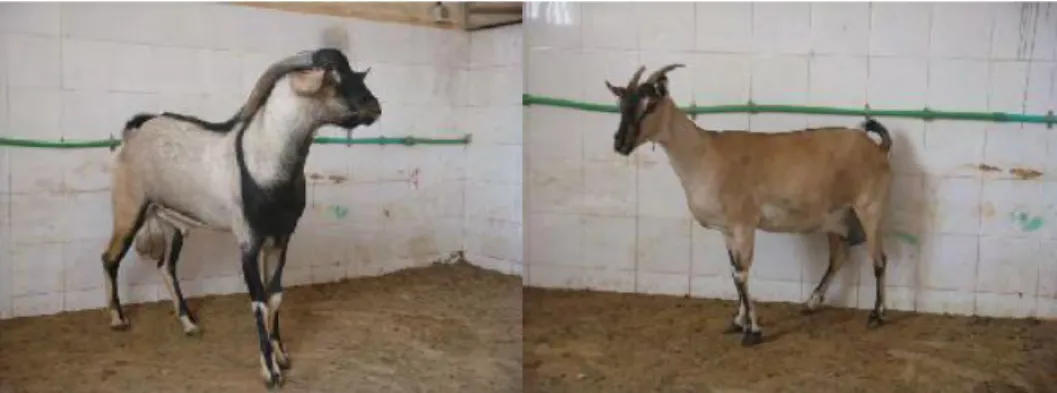
Effects of Synchronisation and Artificial Insemination with Alpine and Saanen Semen on Reproductive Traits of Iranian Goat Breeds
Effects of synchronization and artificial insemination with alpine and senna seed on reproductive traits of Iranian goat breeds. Animal husbandry as a factor affects the conservation of natural resources and the utilization of genetic resources.
Milk Production of Local Qomi and F 1 and F 2 Qomi × Saanen Goats in Iran
Investigate to find out the performance of F1 between Indian and local Co in Vietnamese raising mode. Compare the genetic potential of some growth and milk traits of hybrid (crossed) Saanen with native goat (Lori black goat) versus native goats in Qom province.

Serum Protein Polymorphism in Iraqi Local Goats Using Polyacrylamide Gel Electrophoresis: Transferrin (β-Globulin) Polymorphism
The differences between the expected number and the observed number for the transferrin genotypes were not significant based on the Hardy-Weinberg law. The detected alleles can be used to benefit domestic animal genetic improvement programs and biodiversity conservation.

Phenotypic and Genetic Marker of Dairy Goat Performances Based on the Polymorphism of Acaca Gene
Phenotypic and genetic marker of dairy goat performance based on the polymorphism of Acaca gene. The results showed that the qualitative characteristics of ear type and head color had no effect on milk fat and protein content.
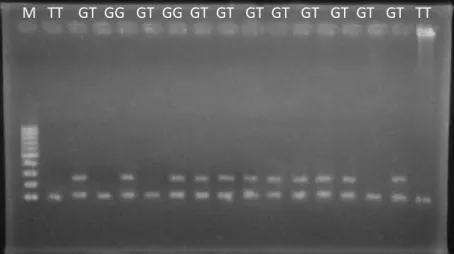
Effect of Body Condition Score on Milk Yield, Protein and Fat Contents in Etawah Crossbred Dairy Goats
Effect of body condition score on milk yield, protein and fat content in Etawah crossbred dairy goats. In the present study, increase in BCS significantly (P<0.01) increased milk production but did not affect the protein and fat content of milk.

Detection and Identification of Pregnancy-Associated Glycoprotein as a Biomarker for Early Stage Pregnancy in Goats
Detection and identification of pregnancy-associated glycoprotein as a biomarker for early pregnancy in goats. Pregnancy-associated glycoprotein was also detected in goat sera where its molecular weight and pI were comparable to those of other species.
West African Dwarf Goat Milk Production, Composition and Kid Growth during the Dry Season in Western Highland of Cameroon
At weaning, the total gain of children in the supplemented group was almost double (4.60 kg) that of the control (2.44 kg). Also, the daily weight gain of children from the supplemented group was higher (P<0.05) than the control group.
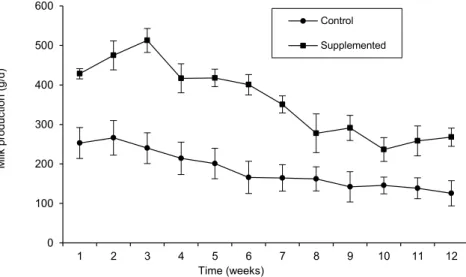
Estimation of Genetic Parameters for Milk Production Test Day Records of Iranian Adani (Persian Gulf) Goats
Estimation of genetic parameters for test days of milk production for Iranian Adani (Persian Gulf) goats. Genetic correlations between adjacent test days were high (>0.9, average 0.94) and decreased as the distance between tests increased.
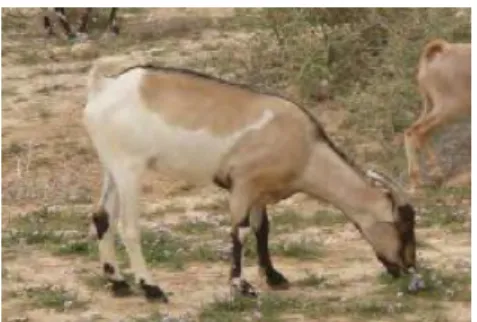
Sexual Behaviour of Indigenous Does and Ewes under Mixed Flock System
It was found that doe and sheep showed similar patterns of sexual behavior during precoital, coital and postcoital phases in a mixed flock system.
Genetic and Phenotypic Parameter Estimates for Birth Weight in Iranian Indigenous Goats
All fixed effects examined in this study had a significant effect on children's birth weight. Birth weight for litter size, kidding parity, sex and birth year of children of the native Iranian cashmere goats.
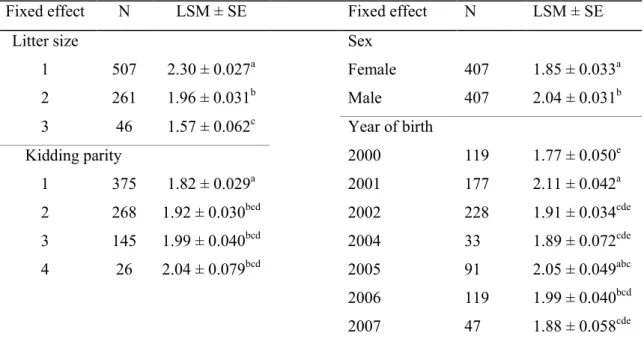
Taurine-Rich Goat Milk
Goat's milk: a viable, nutrition-based approach to improve the nutrition of orphaned and vulnerable children. Improved Taurine Determination by High Performance Anion Exchange Chromatography with Integrated Pulsed Amperometric Detection (HPAEC-IPAD) Anal.
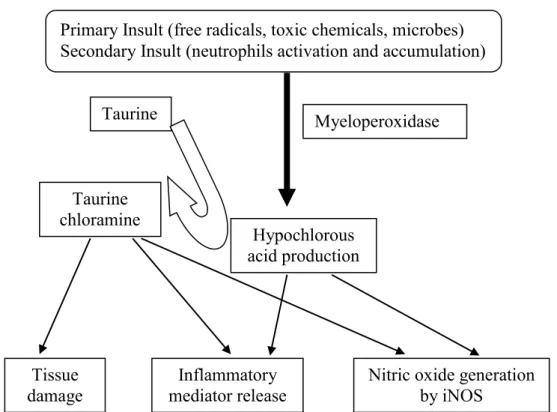
Feed less Food” – Effect of a Low Concentrate Diet on Milk Quality, Milk Fatty Acid Composition and Performance of Dairy Goats
Annual milk yield, fat and protein content of goats fed according to Bio Suisse guidelines (KF10) and EC regulation on organic farming (KF40). Conjugated linolenic acid content in milk from goats fed according to Bio Suisse guidelines (KF10) and EC regulation on organic farming (KF40).
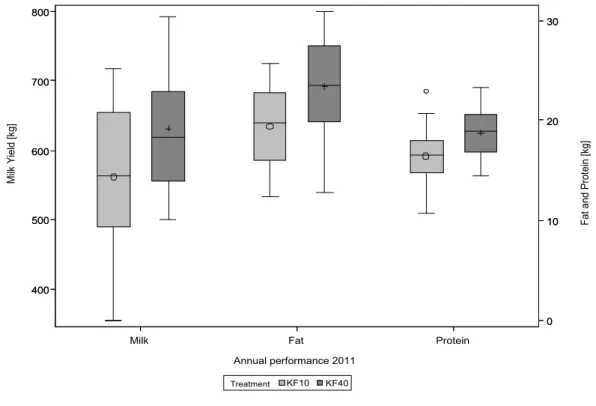
Comparative Studies of Milk Components of West African Dwarf Goats and Sheep
Important elements in the milk of West African dwarf goats that are influenced by the lactation stage. Variation in yield composition of milk from different quarters of lactating white Fulani cattle in tropical environment.
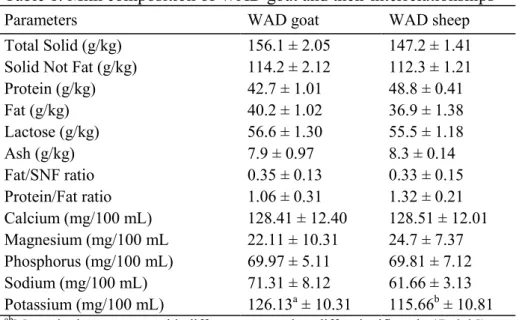
Introduction of Goat Milk Pasteurisation Equipment to the Etawah Crossbred Dairy Goat Farmers in East Java Province, Indonesia
Introduction of goat milk pasteurization equipment to the Etawah crossbred dairy goat farmers in East Java Province, Indonesia. The study showed that after the training, the participants were able to properly use the milk pasteurization equipment and made dairy products from goat's milk.
Conjugated Linoleic Acid (CLA) Content in Ferment Goat Milk
Composition and Quality of Hand- and Machine-Milked Goat Milk
The coliform count was higher in milk obtained by machine milking than by hand milking. Raw goat milk obtained by hand milking had a higher percentage of milk fat, protein, solid non-fat and SCC numbers than those obtained by machine milking.
Using Ultraviolet Irradiation in Combination with Pasteurisation to Reduce Microorganism Content and Extend Shelf Life of Goat Milk
Increasing recirculation cycles also served to reduce the microorganism content in the UV-treated pasteurized milk. UV treated milk, 1 cycle recirculation UV treated milk, 2 cycles recirculation UV treated milk, 3 cycles recirculation.
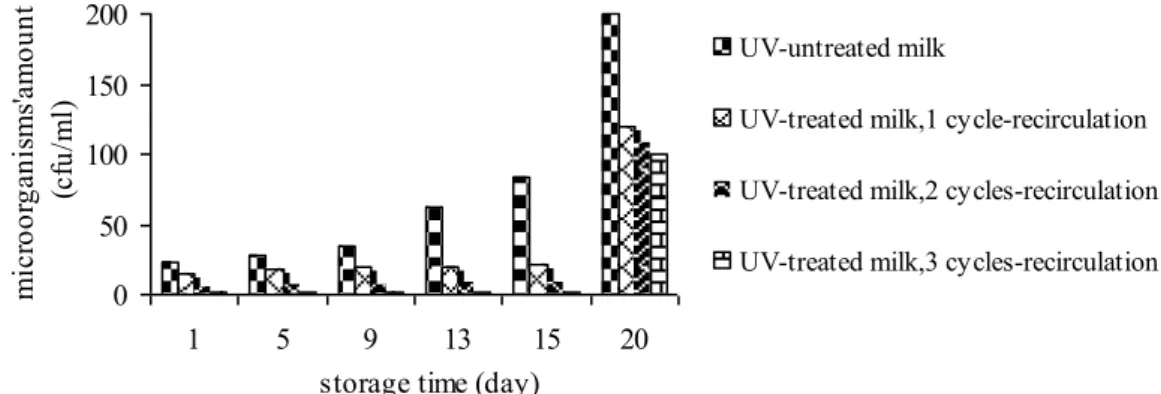
Goat Milk Production and Utilisation in Nomadic Pastoral Society of Kerman Province of Iran
Among the Raen nomads, milk is processed in the following steps; milk is filtered into a pan, heated and allowed to cool. To make cheese (Paneer), milk is placed in a pan and heated gently on a low flame.
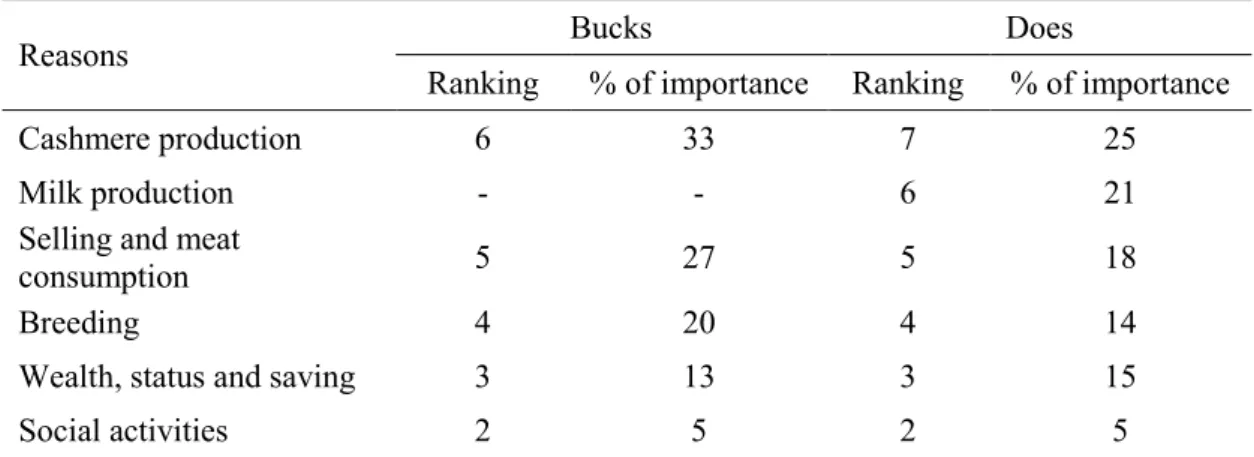
Effect of Feeding Cassava Peel Chips on Nutrient Consumption and Milk Production in Dairy Goats
The result of replacing concentrates with cassava peel chips in this study showed that DM, Organic matter (OM), crude protein (CP) and energy (TDN) consumption of goats decreased significantly, but milk production was not affected (Table 2). In this study, the effect of cassava peel chips in the diet on milk yield was not significant.
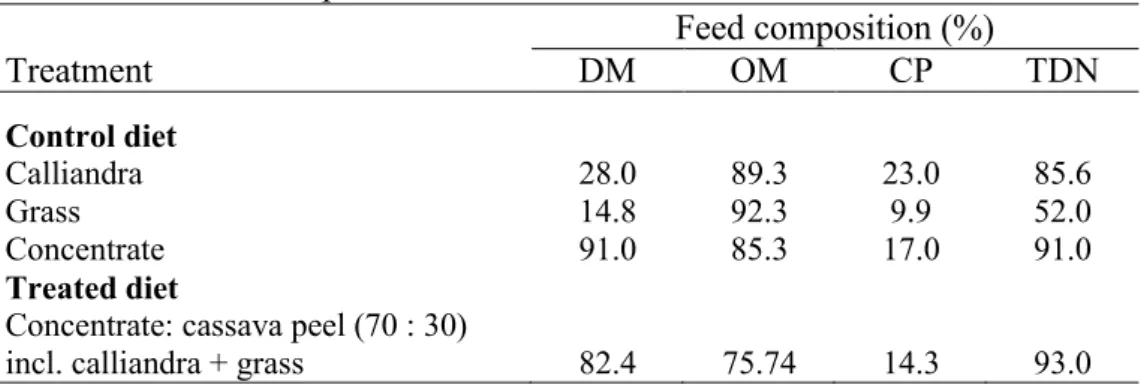
Comparison of Nutrition Quality between Cow and Goat Dairy Products
A Meta-analysis
A current meta-analysis found that goat's milk products have different nutritional properties than cow's milk products. A unique nutritional property of goat milk products is that they can support human health.
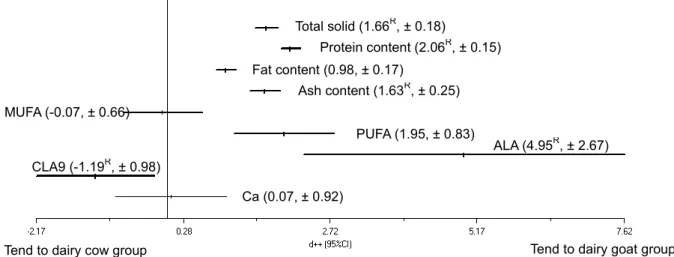
Prevalence of Gastrointestinal Parasites and Efficacy of Anthelmintics in Dairy Goats in Pakistan
The lowest efficacy of Azadirachta indica leaves was observed against gastrointestinal parasites (16, 25, and 33% on days 3, 7, and 14, respectively). It is concluded that Nilzan plus is the most effective agent against gastrointestinal parasites in dairy goats (Table 2).
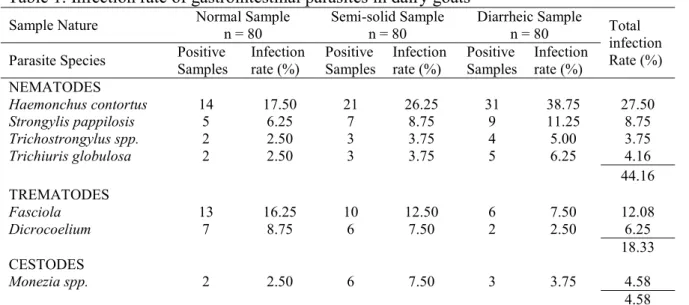
Phylogenetic Analysis of Serotype Asia 1 Foot-and-Mouth Disease Virus
Asia Diversity and the Iran Perspective
Sequence and phylogenetic analysis of non-structural regions encoding proteins 3A and 3B of foot-and-mouth virus subtype A, Iran 05.
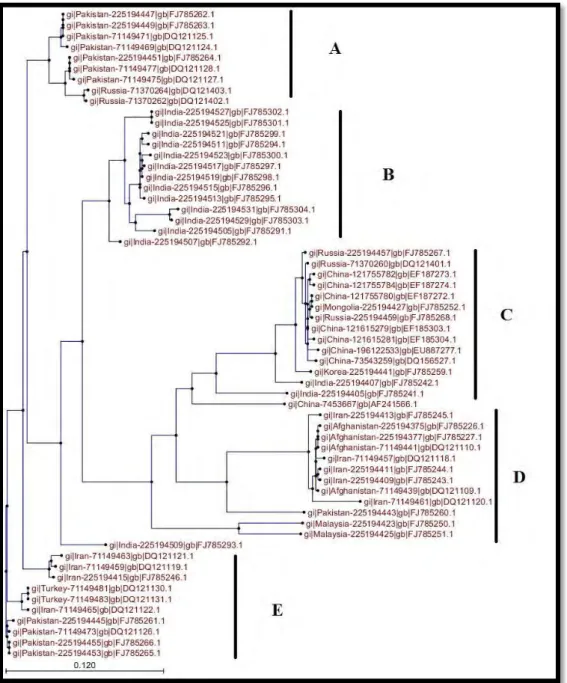
Johne’s disease in Goats: A Histopathological and Serological Study
Acid-fast ZN staining of impression stains and tissue sections of intestine and mesenteric lymph nodes. A multibacillary form (clearly seen in the right photo) in which the ruptured cells were filled with acid fast bacilli of Mycobacterium avium sub sp.
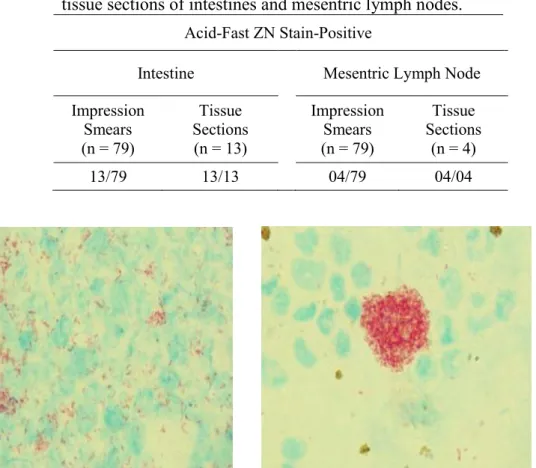
Sero-epidemiological Investigation and Risk Factor Analysis of Brucellosis in Small Ruminants and Their Owners in a District Of Pakistan
Sero-epidemiological investigation and risk factor analysis of brucellosis in small ruminants and their owners in a district of Pakistan. The results showed a significant association between natural breeding of animals and positive cases of Brucellosis.
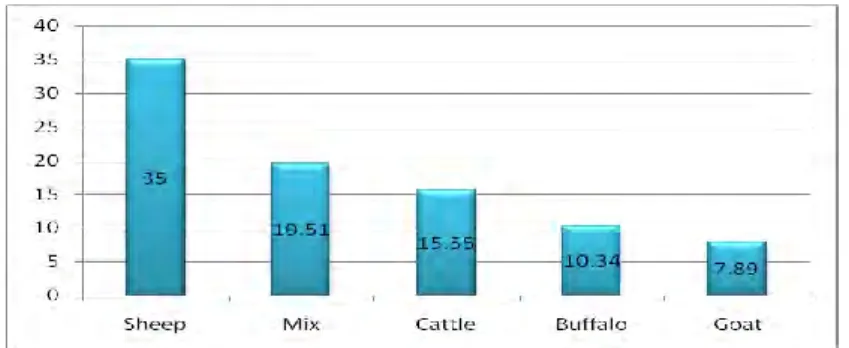
Improvement in Rural Livelihood through Dairy Goat Farming in India
The home channel and morphological characteristics of the important goat breeds of goat breeds in India are shown in Table 4. Mehasana Medium Milk, Meat Black coat with white spots at the base of the ears.
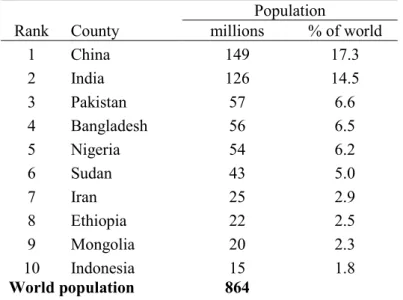
Housing Advancements for Smallholder Dairy Goat Farming in the Tropics
The Dairy Goat Barn
Cooling and Ventilation System
Improvements in Animal Production
Rural Farmer Preferences Regarding Purpose of Rearing and Choice of Body Coat Colour in Indian Rural Goats
The goat keepers' opinion on the purpose of goat rearing is presented in Table 2. Almost two-thirds (62.87%) of the goat rearing community indicated that their purpose of rearing goats was for meat, followed by dual purpose (milk and meat) ( 33.12% ).

Developing a Model of a Goat-Sharing System Based on Farmer Groups to Improve Etawah Crossbred Goats in the Village
The result concluded that the sharing system can increase the number of goats and improve the function of the farmer group organization. Aspects of Goat Farming in the Communal Farming System of the Eastern Central Cape, South Africa, Small Ruminant Res.
Normative Pen Mating Behaviour in Local Goats of the Rohilkhand Region
